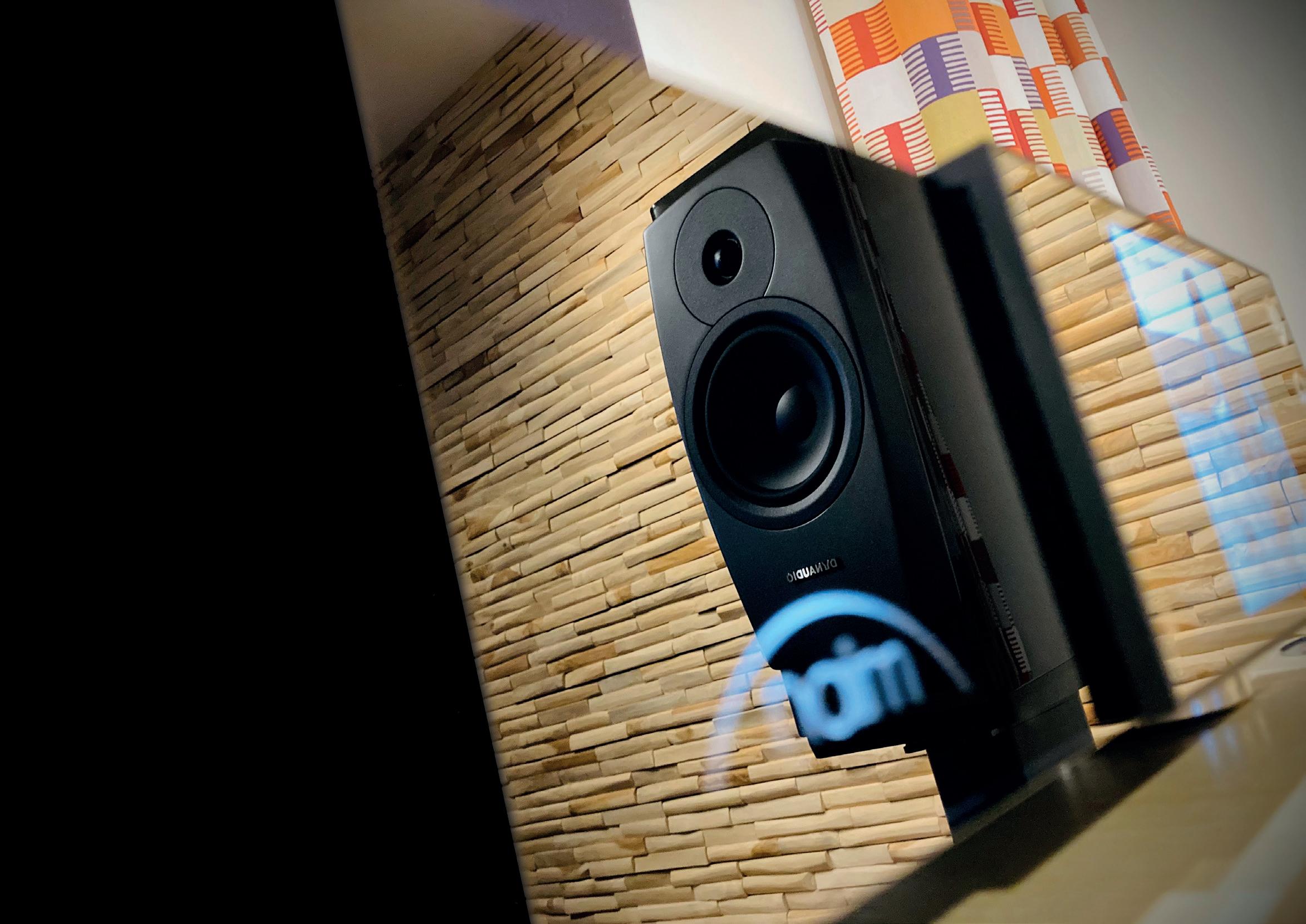

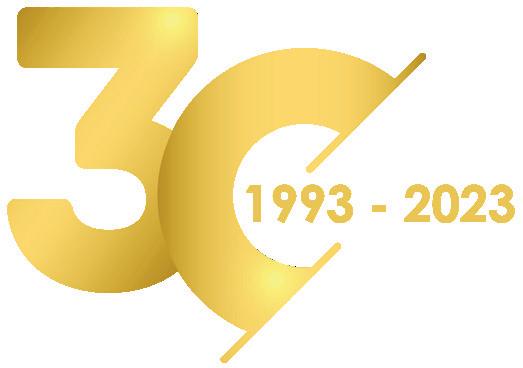
2023
year book
Truth be told, persuading myself to let go of the reigns is not easy. Thirty years and a sense of declining competence, not to say a level of fatigue, does rather focus the mind, though, so I’ve come up with a cunning plan: If we take on sufficient staff, there will be no room for me in the office and I will have to either slope off or work from home. And everyone knows that no-body actually does any work there :)

Alastair’s column
Welcome to the Signals 2023 year book. I’ve completely lost track of which issue number we’re up to now, but I’ve been producing this drivel for most of the thirty years we’ve been trading.
When Signals started, I was a 37 year old with a two and three quarter year old daughter. To get things underway, I swapped childcare duties with my pharmacist wife so that she could temporally be the main breadwinner.
Roll the clock forward thirty years and it’s gratifying to see that Signals has done reasonably well. So many of our customers / clients feel like life-long friends that it’s often hard to remember that we are running a commercial enterprise at all. There can be few more rewarding ways to be rewarded and no better co-directors than Mr Heavens. Thank you all.
Significantly for me, my state retirement age has come and gone. In April 2022 I became a pensioner. Peer wisdom says that I ought to be chilling out and helping look after our not quite two year old grandson.
Allow me to introduce Kevin Fulcher, our latest recruit. By virtue of his ‘Ditton Works’ youtube channel, half of you already seem to know him. The rest appear to be cyclists and recognise him from his previous job. It’s not just hi-fi that exists in an improbably small world.
Kevin brings knowledge and communication skills that will be very welcome and I’m sure he will be an asset, strengthening an already capable team.
Andy has become the primary point of contact for so many customers and Mick’s network knowledge has made him indispensable to others. Mick will be taking over more of the administrative tasks while I suspect that, at the very least, Kevin will have everyone buying Iso Acoustics Gaias for their speakers!

I’m planning on staying involved, just a little less than now.
If you’re wondering why this year’s missive is so late, please allow us to blame Naim and Rega for having new products looming in the works that caused us to hold back. Now, with our celebratory audio show only weeks away, the pressure is on to extract digit and get on with the waffle.
Strong sellers over the past couple of years have come from some unexpected places. ATC’s loudspeakers, particularly from their more down-to-earth series, offer terrific value. The most expensive of them, the utterly brilliant SCM 40, has sold particularly well in both active and passive forms.

Auralic’s Altair G2.1, Naim’s new NSC 222 and Linn’s Selekt DSM all make excellent single box streamer / pre-amps to drive them.
Diminutive digital audio brand


Bluesound have been building a steady following over the past few years. The Node streamer has carved a significant niche for itself as an audio bargain that can add networked audio to existing hifi systems.
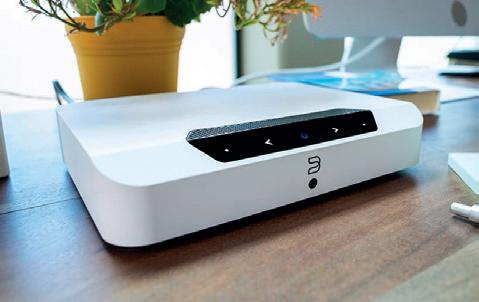
The PowerNode and, new, smaller PowerNode Edge take this further by being entire audio systems in the improbably small (plastic) boxes. Using HDMI ARC, both PowerNodes and Node can integrate TV sound in a pain free way.
Audio quality is better than it seems reasonable to expect but these do not suddenly render high end systems obsolete. Routing a Node through a good quality (usually Chord) DAC can bring a worthwhile upgrade, though. We’ve even heard of a Node giving impressive results with a £10K Chord Dave DAC.
Presumably this is called a reverse mullet?
The control interface is excellent and there is access to most music streaming services, including MQA encoded Tidal HD.
Alternatively, for a different kind of minimalism, ATC make a suitable CD player / DAC / pre-amp, the CDA-2. Chord DACs, such as TT2 and Dave are also excellent bedfellows, feeding from a suitable digital source, such as Melco or Innuos.
Positive news from ATC has been that they are bringing cabinet construction for their more premium models completely inhouse. Sub-contracting cabinetry for the entry series to distant shores is wholly understandable and will continue.
Zones can be joined up or separated through the intuitive and fully-featured control App. To cover additional zones, there are matching ‘wireless’ loudspeakers, even a music ripper / store for your CD library and TV sound bar.
Signals St Cecilia’s House 188 High Road Trimley St Mary IP11 0SS 01394 672464 www.signalshifi.com
The soft golden glow around St Cecilia’s has spread. Our Accuphase collection, perhaps it’s a habit, has grown substantially and we now hold more demonstration stock than any other UK dealer bar the distributor.
Far from offering ‘bling’, the soft Champagne tone is self effacing and settles quietly against the oak wood and ply Lateral stands and our wooden walls. The look may have a 1970s vibe but the number of times we’ve heard ‘do they do black?’ from potential buyers has been minimal.
This stuff might actually be hip!
We have on demonstration three of the four available CD players, C-2150, C-2900 and C-3900 pre-amplifiers, the P-4500 class A/B power amplifier, A-48 and A-75 class A power amps, E-650 class A integrated amp and E-280 + 380 class A/B amps.

We had one of the new E-4000 Integrated class A/B amps too but, with only a couple of them in the country and a six month delay until more arrive, we relinquished it to a customer. Later in 2023 we will have another E-4000. If you’re looking for a downside with Accuphase, it’s the less than plentiful supply situation.
One of the assumptions that we’ve run into is that there is something inherently positive about amplifiers being integrated, bringing shorter signal paths etc.
It’s a tribute to how pure, musical and composed these amps sound that this should be considered but, really, there is no material gain, just the cost saving of a single chassis. .
One of our earliest purchasers of the E-650 class A integrated amplifier tried running the 2150 pre-amp straight into the power amp section and the improvement in resolution, scale, refinement and perceived power was significant.
Supplanting the E-650 with a dedicated power amp was the logical progression. The plethora of switches, even tone controls, are weirdly benign. We’ve had a significant number of buyers move over to Accuphase and the RRP of what they are buying has usually been some way below that of the trade-ins. For digital front ends, the Naim + Auralic streamers have been favourites.
If you’re looking for a high end CD player, Accuphase offer one of the few games in town.

Their entry level DP-450 is a lovely, refined conventional player. Both DP-570 and DP 750 players come above it and can handle standard CD and SACD discs. The 570 is deeply impressive but the 750 has truly made its mark on us. We held an Accuphase event in the summer of 2022 and had the opportunity to compare the DP-750 with their new, almost £40k, two box player. It was reassuring to note that the extra outlay really does elevate the performance still further. Quite spectacular!
The integrated amps and lower end pre’s can accept option boards. These are the excellent AD-50 MM/MC phono stage and DAC60, we do tend to recommend external DACs but AD-50 makes perfect sense. The higher end pre’s take more expensive, higher end phono boards.
For the dedicated, the superb C47 stand-alone phono stage at just under £10,000 may well be just the ticket . . .
Full demonstrations are highly recommended - it’s why so much is here!
If there was an award for our longest serving audio supplier to us it would go to ATC. We’ve been dealing with them almost since our inception.
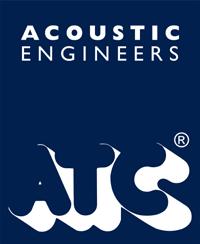
August 2022 marked a sad turning point for ATC with the passing of their founder, Billy Woodman. He was one of life’s true gentlemen and leaves a remarkable legacy.
Based in Gloucestershire, ATC was formed in 1974 and Billy had learned his craft working at Goodmans Loudspeakers. His principles, philosophies, and absolute commitment to achieving engineering excellence are the foundation on which ATC is built. At the heart of this was outstanding transducer design and engineering that focused on achieving the best sound reproduction possible.
ATC remains in the hands of the Woodman family and his son, Will, is now in charge.
Recent years have seen noticeable developments in performance and, arguably, value. Some of their products may look physically quite brutal but the ATC house sound is high on subtlety and transparency.
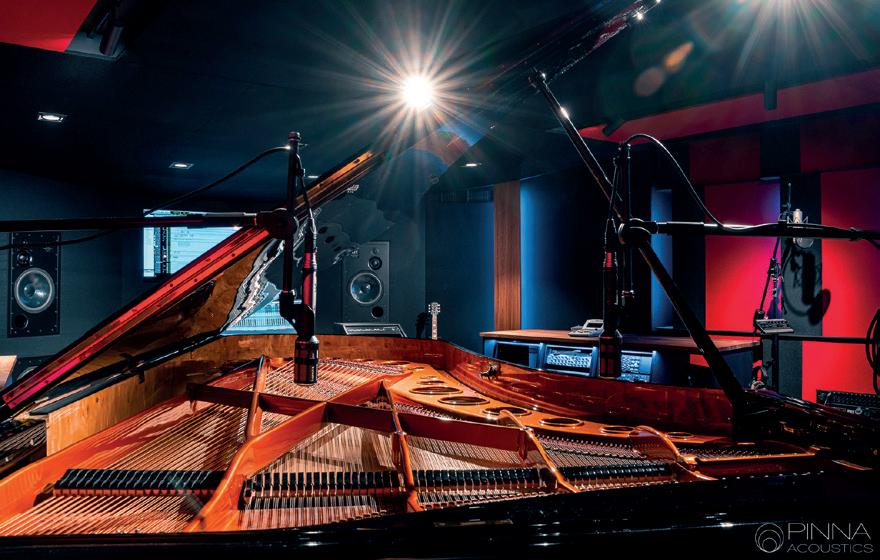
Most of the electronics that we stock are very compatible with the ATC range. The passive loudspeakers tend to be fairly inefficient, but they are generally easy to drive in terms of load.
The SCM40 is regarded as one of the audio bargains, in both passive and active configurations. The ATC actives all make a very good case for themselves when you compare benefits of this configuration and relatively low cost of their electronics when packed inside the loudspeaker enclosure.
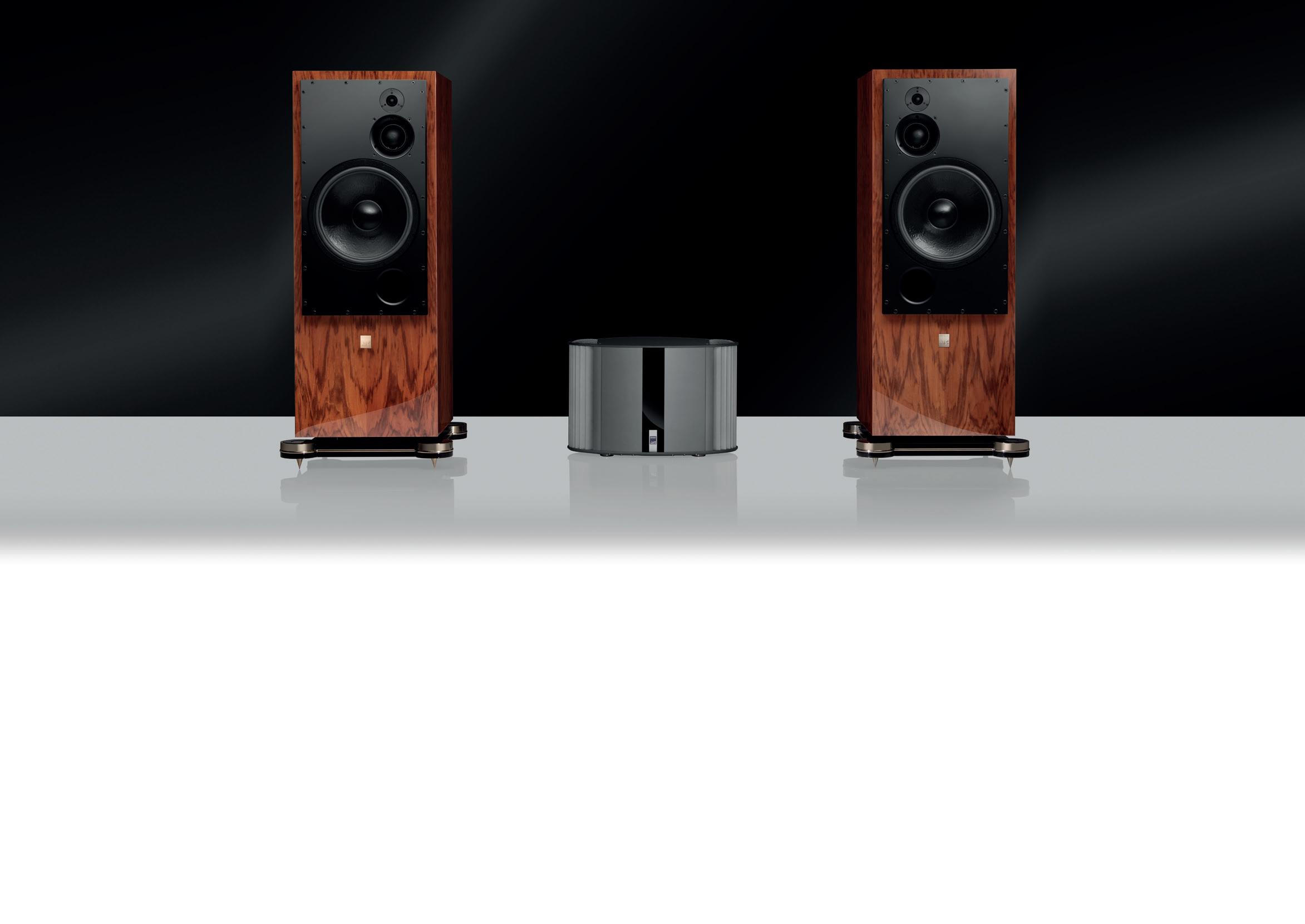
Delivering a freshly specified and built Linn LP12 to a local ATC SIA2/150 (integrated amplifier) owner and recent SCM40 convert the other day, Andy was struck by how good his near 20 year old amplifier still sounds.
We still keep our hands in with ATC electronics but not, perhaps as much as we should. We nevertheless try to carry a cross section of the range on demonstration.
Above, we have a combination that is far from commonplace:

Naim Statement amplification with the full ‘statement’ set of Auralic boxes. We may have judged the Zeitgeist wrongly here, though, since massive collections of boxes seem to be seen as so last century at the moment.

Still, we’ve had a modicum of success selling single and two box Auralic combinations. Here, the streaming transport, clock, scaler and DAC, all from the G2.1 series, are connected together. Cleverly, they each recognise which devices are present and the whole package operates as a single, very capable, whole.
Scares the hell out of me but Mick and Andy seemed to find it a piece of cake. The control ‘app’ is popular with users.
Across the board, the Auralic components can access streaming services from Amazon to Qobuz. There is even a work-round to access HD content on Amazon. Apple music can be accessed via airplay.

The lower end Aries + Altair G1.1
streaming DAC and Streaming transport have had a mild revamp, albeit mainly a visual one. There is an example of the Altair lurking awkwardly at the bottom of this page.
Being both DAC and streamer, the Altair seems like the obvious vaguely affordable choice. In reality, adding the Aries Streaming Transporter upgrades the performance to a bewildering degree and it quite probably makes rather more sense to get the transport first and use a decent quality DAC via the USB, Toslink, Coaxial or balanced digital output.
The 2.1 version of the Aries is a significant step up and has been used successfully with Chord and Accuphase DACs.

The Altair G2.1 arrived in 2021 and it combines an excellent analogue pre-amplifier, moving magnet phono stage, with streamer and DAC. Coupled with a decent power amplifier or active loudspeakers, the results have been exemplary. We’ve been particularly taken with it driving the similarly bijou Chord Étude power amp, ATC SCM 40 or 50 active loudspeakers.
Audiolab is proving to be a popular choice for people looking for amplification with those ‘modern’ facilities, such as an internal DAC, and bluetooth audio. The 6000A is very competitively priced and comes with all of the above, plus a respectable MM phono stage.

The ‘Play’ version includes an in-built DTS Play-fi based streamer.

There is a very modestly priced ‘CDT’ CD transport and the 6000N DTS powered streamer that has the killer feature of assignable hard buttons that can select between pre-set internet radio stations. I kid you not, these simple features can make all the difference.
The 6000N offers excellent sound quality and is another of the rare beasts that can access Amazon Music.
The new DC blocker is available as a single ‘brick’ or as a 6 way unit in casework that matches the other electronics. It certainly works exceedingly well with the Audiolab kit and costs less than a posh mains lead!
The new 9000 series (right) had its launch slightly delayed this year but is starting to come through. It’s likely to join our portfolio soon.
Sincere thanks to Dynaudio for this article

More like it are in their excellent magazine, now on issue 04, which is available from us free of charge.
Please don’t ask us to post it, though, it weighs a ton :)
Have we mentioned that Dynaudio make some of the finest loudspeakers out there?
We have examples from all their ranges and will be pleased to demonstrate.


Linn have had a busy couple of years.
On the analogue front, the entry level Majik pre-configured turntable received the new Krane tonearm in 2020. It now offers the choice of Moving Magnet or Moving Coil cartridges. The latter is called Koil naturally.


The news in summer 2022 was the change of designation of the mid-tier Sondek from Akurate to Selekt. This in turn brought a new Tonearm called Arko to replace the Akito.
The re-designation of the Akurate turntable has been mirrored by deletion of Akurate from the DSM (streamer) electronics range.
The original concept of the Selekt DSM products was that they be completely modular. Linn have developed this principle forward so that there are now almost limitless combinations of feature and ability level.
Beyond black or silver anodised finishes, there are even two grades of enclosure.
Original sheet alloy Classic and new Edition Hub, the latter with Klimax rivalling heavy grade machined alloy casework. All the contents are negotiable, with four grades of DAC quality, line level output or with up to 5 channels of amplification.
For active loudspeakers, it’s possible to specify the whole system within a single compact case.
The top DAC option, available in stereo or dual mono configuration is Organik. This was launched in the Klimax DSM in 2022.
We’ve been enthusiastic advocates of Kudos loudspeakers ever since their inception and have witnessed the progression from C1 stand-mount via C10 to Super 10 and, now Super 10A as well as the arrival of the Titan series, now in its second generation.
The current range encompasses Cardea C10 stand-mount, C20 floor-stander, Super 10A and Super 20A. Above this come the Titan series, 505 (stand-mount) and 606, 707 and 808 floor-standers.
In recent years, Linn systems have become wholly digital at heart and this, coupled with their Exakt DSP software has been used to apply the crossover requirements in the digital domain.
With one of the negative aspects of active being the high box count of electronics involved, it’s impressive that the Linn Selekt can offer really high performance and musicality from a single compact component.
Naim’s recent launch of the New Classic series, and the end of life announcement for their older products as put Kudos in a slightly awkward situation. For Naim users, we are just about able to continue to offer active upgrades for Kudos users, but in spring 2023, time is running out.
Along with Arko comes the choice of Kendo or Krystal MC cartridges.
Here’s Kendo :
And, yes, it does look closely related to the ultra high end Ekstatik pictured on an Ekos SE far left.
The Linn Radikal II upgrade arrived in late 2021
This upgrade includes:
new Radikal motor fitted to the LP12
new Radikal II electronics fitted to your existing Radikal enclosure
new Radikal II Tachometer fitted to the LP12
These new electronics bring a substantial uplift to the performance of a Urika phono stage being fed from the Radikal II PSU.
Armed like this, with four power amplifier modules we’ve used a Selekt DSM to drive some Kudos Titan 606 loudspeakers in fully active configuration to spectacular effect.
As well as the Select DSM players, we have the latest version of Klimax DSM. And a very fine thing it is too.

All, with the exception of the C10 and C20 have the capacity to be used either as passive loudspeakers (a standard pair of speaker wires to the amplifier, crossover components inside the speaker cabinet) or actively, where the frequency split between the drivers is done at line level and power amplifiers connect to the respective drivers directly.

Active operation became the holy grail with Naim and Linn users from the 1980s onwards and each of the brands had slightly different strategies to do this.
With Naim, the crossover, called SNAXO, would need a power supply and would then be connected to each of the power amplifiers in use.
Kudos have their own stand alone crossover in development and, paradoxically, Naim’s adoption of balanced connections on the new kit will probably make connections more straightforward.
As for Kudos’ own products, the range has not had any significant changes other than them offering a new ‘signature’ veneer option. For years, Tineo (Indian Applewood) has been synonymous with their products but the pursuit of sustainability, and need to source materials responsibly, has led to its replacement with Liquidamber.

There is a partial shot of some Titan 808’s in it at the bottom of the page.
Natural oak, black oak, walnut, gloss white or gloss black remain options for the Titan series. Satin white, oak or black oak for Cardea.

A recent arrival is the Epos ES14, a re-imagining of the original 1980’s Robin Marshall concept by Karl-Heinz Fink and his team.
Fink bought Epos from Mike Creek in 2020 with the intention of breathing new life into it. Under Creek’s stewardship, products had been manufactured in China and this arrangement looks to continue.
As one of the primary individuals behind Q Acoustics, Karl-Heinz has a great deal of experience in dealing with Chinese suppliers. The cabinet finish and build is excellent too, although I can’t help thinking that the interestingly styled double layered and damped cabinet deserves something more striking than the American Walnut that we chose.
These have had an absolutely stunning review in What HiFi magazine and we can see where they are coming from. They’re not exactly bass shy and need space to breathe but, once well sited, they are controlled from top to bottom. There is a fairly warm balance but with excellent refinement, openness and clarity.



Curiously, they seem one of the few speakers to not work at their best with the lower end Accuphase electronics. Some of the larger Rega amps, and the new Naim 200 new Classic series are better with them. Larger Accuphases are OK though..
Priced at £4400 including the stands, they price match the Dynaudio Contour 20i, Evoke 50s and Russell K Red 120s.
Our connection with Russell Kauffman goes back a very long way. Russell was very helpful back in the early 1990’s when I was picking my way into the curious world of audio retail. Around six years ago, when he was launching Russell K as a loudspeaker brand, we were keen to get involved and I was impressed to see that he was staying true to design principles that he had argued for some twenty years earlier.
Initially, in those pre-Brexit days, he was able to manufacture his designs fairly inexpensively in Poland. Cabinet finish quality wasn’t especially good but, with high sonic ability and modest pricing, his speakers were an extremely compelling proposition.

Gradually, it made increasing sense to shorten supply lines and to bring production to the UK. Russell K are not the only suppliers to have seen their costs rise but they are the only ones to have done this at the same time as moving towards more expensive, albeit higher quality manufacture.

Judged against their price matched competition, the RK speakers remain seriously competitive, By having zero internal damping, they offer some unique characteristics. This results an immersive sense of hearing right into the mix. They are engaging and dynamic, with excellent bass quality.
We have the entire range on demonstration. They work well with all our electronics brands and are generally quite easy to place.
With PMC, we’re focussing on the facts at the moment! For those unfamiliar with the brand, ‘fact’ is their most sophisticated series of domestic loudspeakers.
We have the signature version of both fact 8 and fact 12 on permanent demonstration along with a smattering of their other models.

The original fact 8s were the PMC models that attracted us back to the brand a decade or more ago. The signature version arrived about three years ago and was a significant mid-life refresh for both 8 + 12.
Both are available in nicely figured natural walnut veneer, satin white or a slightly metallic satin grey. With adjustment to both bass and treble output and an inherently easy-going nature they are speakers that can work very well where others struggle.
Their narrow frontal profile and clean Scandinavian styling have helped their case in contentious domestic situations too.
All PMC loudspeakers use their Advanced Transmission Line bass loading with a folded horn effectively working in reverse within the cabinet. This leads to an inherently high level of cabinet bracing and very extended bass performance.
The 8 is a two and a half way design with one of the bass drivers joining in to augment the low bass.
Fact 12 has a separate soft dome midrange driver of PMC’s own manufacture.
French brand Focal is owned by the same holding company, Vervent Audio Group, as Naim Audio, and is sold through the same supply network.



In recent years, Focal have used Naim electronics when developing their products and the Naim factory is awash with Focal loudspeakers for their own development needs.
Focal make all of their loudspeakers in France and the range is expansive. Right up to the top “Utopia’ level, there are matching centre speakers and subwoofers. Focal can trace their roots back to professional audio and they remain in this sector. They are major players in car audio too.
Focal have some significant production ‘firsts’, such as beryllium tweeters, in their back-catalogue.
Top end of both the loudspeaker and headphone ranges is called ‘Utopia’.
The high value Chora range has been quite successful for us. Styled by the same designer who did the Naim components, there is an interesting visual synergy with the Uniti range. Vestia, pictured above, comes between Chora and Aria.
All three series’ offer two and three way floor-standers, stand-mount and centre speakers and sub woofers. Across the board they are dynamic and vivid in their presentation. They might be targeted at Naim but the Choras suit the mid range Rega systems especially well.
Beyond their loudspeakers, we also stock a sizeable collection of Focal Headphones. The Utopia’s, picture above, are at the top of their range and were revised in summer ‘22. At a price not far short of £5000 it’s a relief to say that they are very good indeed, possibly the least headphone like ‘phones out there, offering just a huge, open, listening window.


Utopias come with both standard 3.5mm jack/mini jack connectors and multi-pin affairs that give a balanced connection. We first ran into this arrangement with the higher end Sennheiser models and noticed the sonic benefits then.
You need a suitably equipped headphone amplifier and, in the Uniti Atom HE, Naim now provide one.
The rather more affordable Clear MGs, also open backed, have hit the spot for listeners and come with the same balanced option.
There are some closed back models in the range too, the best of them being Celestee, but the age old sound leakage / better audio quality conundrum never goes away.
If you want to hear a big, open, airy sound, you generally need physically open backed ‘phones.
With so many taste, comfort and compatibility considerations, we strongly encourage that listeners try before they buy and we carry the range of demonstration items to facilitate this.
We were first introduced to Meze by a local customer who had bought some of their Empyrean open backed models. Chord Electronics, we discovered, were keen on using them to demonstrate their wares, so we took the plunge and bought some.

At the time, the range amounted to little more than the entry level 99 series closed back and the large Empyreans and it was the 99 Classics that surprised us most. There are two versions; 99 Neo, intended for portable use and 99 Classic. Both have similar drivers but Neo has electro coated ear cups made of zinc alloy and comes with shorter cables for portable use. The 99 Classics have walnut wood ear cups and come with a longer cable too.
The tonal balance is slightly different and our preference is for the wooden ones that coincidentally cost a little more. Despite being closed back, they sound remarkably open.
Above the 99 Classics come the new open backed 109 pro. These are utterly brilliant, but it has to be noted that not everyone finds them comfortable.
There is now a very effective high end closed back model called Lyric. Being of a certain age, I was intrigued to see them being described as using Isodynamic drivers from a company called Rinaro. I remember my 1973 Wharfedale Isodynamics fondly.
Almost regardless of the technology employed, Meze make remarkably natural sounding ‘phones. The Lyrics have it in spades and the Empyreans even more so.
Four years on from first stocking Lateral audio stands, we really seem to have found our ‘groove’ with them. They work well with all brands of electronics but are particularly well suited to Accuphase, having the capacity to accommodate their large, heavy boxes.

The concert stand includes an isolation shelf on the top level and this can be replicated on any shelf that you like and it has a significant impact on whatever device is placed on it. When we were comparing the new Linn Majik DSM to a base specification Selekt, we noticed that whichever one was on the Concert shelf was the one that sounded somehow better.
There is a new, lower end, modular stand called Cadenz. Deleting a letter definitely makes it cool and, in fairness, it’s a thoroughly excellent stand for the money. But the Concert stands, even without the isolation platforms, are bewilderingly better.
A new arrival that we’ve tried and have committed to ordering is an isolation widget called Arena. So, coming soon . . .
We’ve never employed a proper loudspeaker fetishist before but, in Kevin, we might have found one. Anything that improves what a speaker can do is of great interest to him and IsoAcoustic Gaia Isolation feet have really hit the spot with him.
Whether you have a solid concrete or suspended wooden floor, they manage to clean up, in a thoroughly positive way, the presentation of just any speaker we have tried them with.

Our usual arrangement is to allow the customer to try them out and, because they almost never come back, the set we lend is usually new.
IsoAcoustics make a wide range of isolation devices and turntable supports. Their Aperta interfaces go between support shelf and the loudspeaker.



Versions are available that suit centre speakers and Sub-woofers. Some can also introduce an element of tilt, if needed.
We have their ZaZen turntable support platform in stock too.

If I have the story right, back in 2002 when Naim were just launching the new 200, 300 and 500 series Linn were also making a splash about their own new product, the fairly modestly specified Classik all in one CD / tuner / amplifier.
I cannot recall which of the Naim seniors said it but the line was ‘Gentlemen, this is our Classic’. Seems that the name stuck.
We got involved in selling Naim around 2003. By then, the dust had settled on the change from ‘olive’ but there was still some bad blood not to say fractured relationships over it. Beyond the aesthetic, the new products brought a change in sonic signature, one that we rather took to, others less so.
Welcome, in Naim’s 50th year, to the ‘New Classic’ 200 series. More is to follow. For now we have NSC 222 streamer / pre-amp, NAP 250 power amp and NPX 300 power supply.
NSC 222 is the long awaited replacement for the much loved NAC-N272 but it’s not a simple drop-in alternative. Where the 272 was a strange amalgam of new thinking (pre-amp) and rapidly out-dating tech, (streamer) this is part of a completely new wave of electronics.
The NPX 300, despite being part of the first wave of products, is from the 300 series and will become the default power
supply for some of these forthcoming products as well as being an upgrade for any existing Solstice turntable and phono stage.
The new products will supplant 282, 252, 250DR, Superline, XPS DR, HiCap DR and Supercap DR so these are all approaching end of life, even though some of the replacements have clearly yet to arrive.
Owners who are seeking to complete existing systems with physically matching items please be warned that we are now well and truly into last orders territory. Just in case, we have a small cache of new HiCap DRs and Supercap DRs here in anticipation of ongoing need.
CD5si, Nait 5si, Uniti, Nait XS, Supernait 3, ND 5XS 2, and NDX 2 all remain in production unchanged. Similarly, changes to the 500 series, whilst inevitable, are not expected for some time.
What is going to be a shock for those keen on incremental steps is the change of connectors from DIN to XLR (yet still running in single ended mode). Steve Sells explained and it all makes sense when you read the white paper on the subject.
Short version: just believe :)
There is a considerable amount of trickle down technology from Statement in the 222. The volume control uses ladder resisters but with the same clever tech to avoid the
clicking sound when changing level. The new 222, certainly when powered by NPX 300, has an effortless clarity and an ability to hook you into the musical performance that I’d say is some way above the 272 powered by either XPS or 555.
We have had the new components in our hands since the turn of the year and they have certainly not disappointed. Our only issue is that surprisingly many of our customers have evolved their 272 based systems to include NAP 300 DR power amps and some have SuperLumina cabling too.
The new classic NAP 250 is excellent. To our and other ears, it’s well up on the old 250 DR. It’s close to, but not better than, the outgoing NAP 300DR, though. The cables to connect the new equipment to legacy are not overly expensive, so mixed generation systems are fine.
The new NPX 300 is equipped with twin Burndy outlets, separating digital and analogue aspects and the NSC 222 is similarly specified. Naim can supply a special “Y’ burndy which allows the NPX 300 to be used with relevant original Classic components and it’s a long way up on the XPS DR.

What’s most agreeable is the way the new kit hangs together as a music system. The new 250 has sufficient heft to drive Kudos Titan 707s with ease and we used those for our open
days. The new system sounds ridiculously capable driving the tall Dynaudio Confidence 60s too. Perhaps we’re too familiar with the Titan 808s on the full 500 system but, even there, the 222/300//250 combo sounds accomplished if a little too easy going.
It’s telling that the people most impressed by the new kit are the ones who already own 500 level systems.
Anyway, there are a few fundamental changes worth noting:
No longer is the audio routed via the power supply. The NPX 300 simply has an IEC mains socket and a pair of differently sized Burndy sockets.
There is an optical system automation cable that links from 222 to 250 and, with this in place, all units can be switched to standby via the handset, front panel or control app. You can adjust logo brightness via the app and it applies to everything, altogether, all at once, as they say in Hollywood.
There is a soft start for the power amp, so no more thumps or shattered fuses. In standby, switch mode supplies, that comply with energy saving regulations, simply keep the system ‘alive; to be controlled. If you do leave it on, nothing runs particularly hot and, even if left powered up, current draw remains very low. As we should have said back in September ‘22, the future’s white!
Some history: Melco was established by Makoto Maki in 1975 in Japan. ‘Melco’ stands for Maki Engineering Laboratory Company.
Maki, an enthusiastic audiophile, established the company to design and manufacture the finest audio components of the time – the masterpiece of the Melco line being the turntable, introduced into the UK in 1980, which was claimed to set new standards in music reproduction.
From those early beginnings Melco developed into the largest computer peripherals manufacturer in Japan, offering advanced products based on rigorous R&D. Products included Wireless routers, Ethernet Data Switches and storage devices such as NAS drives. Initially, though, they made print buffers, which is what led to the more familiar brand name Buffalo.
Turning full circle, the company has revived the highly-respected Melco audio brand now as a sub-division of Buffalo.


Melco’s early success with the music servers was primarily with Linn users in their native Japan wanting better sounding music storage than an off-the-shelf NAS drive. Accordingly, the N1Z H and S servers are exactly the same three-quarter width footprint as Linn electronics.

When we first came across them, we were already using something that was demonstrably better than a NAS and were surprised that (a) the cleaning functions of the internal data switch in the Melco were improving the sonic character of all data pulled through it and (b) that the more expensive N1Zh and N1Zs drives sounded so much better than the ‘bread and butter” N1A.
Having become believers, we have sold quite a few of these and have acquired a fair amount of knowledge along the way. An interesting feature of this type of device is that, if you connect it via USB to a suitable DAC, it can also become a network player in its own right. Control can be via their own ‘App’ or ones from a variety of other vendors. Full functionality, including access to radio and online services such as Qobuz is straightforward. Audio quality is potentially very high indeed, only significantly influenced by the choice of DAC and cabling. Given that something of this calibre is of relevance to any stand-alone streamer, simply adding a DAC actually makes for a surprisingly cost effective high end streaming solution.
One downside of the music server - DAC approach is that it can be a little lacking in dynamics, not something that you would level at the better Auralic, Naim and Linn network players. Inserting an Auralic streaming transport, Naim or Linn streamer between the Melco and the DAC brings rewards. You can even press an elderly Melco into service as an addition to do something similar, giving the rendering job to one unit and serving to the other.
Ripping CDs into the Melco can be accomplished by plugging any USB laptop style CD drive into one of the USB ports.
True to form, Melco’s posh, heavy and quite clearly overpriced D100 CD drive genuinely delivers ‘rips’ that are discernibly better than those from a more prosaic ‘cooking’ drive.
The Melco range has expanded considerably in the past few years. As always seems to end up being the case, we have it all on demonstration. Trying to second guess Melco’s direction in terms of product design has been an interesting ride:
The arrival of the half width N100 server, S100 switch and D100 CD ripper was followed with the N10 server with a separate matching power supply. There are now two N10 variants, one with 3.8 gigs of SSD and another with 5 gigs of hard drive. All have been half width components. They match, you can make up a set.
The new S10 switch looks the same as the S100 but sounds significantly more accomplished. As a side note, Plixir’s excellent power supplies may enhance the S100 but the S10 is still ahead.
Perplexingly, more recent product arrivals have shown a reversion to full sized boxes. First came the N50, which we initially took to be a stop-gap to use old cases. It looks just like the early N1A. Internally, in fairness, it’s quite a step up and offers both SSD (3.8 gig) and H60 with a 6 Gig HD versions. The latter seems to have hit the spot with the review community being only marginally more expensive than the N100.
The surprise is the brand new, beautifully built, and very much full width N1 S38 looming above. Sonically, this is a step forward from even the highly lauded N10 S38. Even if you just wire it as normal, it’s very impressive. Take advantage of the SFP connectors for single mode ADOT fibre and you start to really appreciate its potential. In terms of looks, it’s worlds apart too.
ADOT? It’s pretty bad when you’re plundering your own back issues of newsletters for inspiration and find that a product that has been both successful in terms of sales and transformative in effect barely seems to have been given a mention.
ADOT is the brainchild of Alan Ainslie, who had a hand in the development of Melco and helped bring it to a wider world. Optical Ethernet is not in itself a new idea, our very own Mick Dann was playing with it years ago, but getting the right quality of devices is very relevant to getting the best out of it. Essentially, it allows you to insert a bridge between potentially noisy network devices and generate a clean feed to the music system. It works and it’s not stupidly expensive.
The Melco switches have the optical (SFP) connection and, now, so does the new N1S 38. Funnily enough, there is an SFP connector on the latest Linn Klimax DSM too.
On our reference Naim ND 555 / Statement / Dynaudio Confidence 60 system, the clarity, sense of space and unfettered dynamics has had us spellbound. Familiar tracks have been rendered in a fresh new light. It’s quite a revelation. The best analogy is a visual one : think cleaner, better lenses. We held a Melco / ADOT open day late in 2022 and found ourselves giving the first demonstration of the new single mode version of the ADOT. It comprehensively bests the original multi-mode and the cost of converting from one to the other is thankfully quite modest. Progress, eh?
Step back to 2009, when Naim were getting into networked audio. The standard quickly became UPnP to distribute and control audio over a domestic Ethernet network.
The task of ripping, titling and storing music CDs was done by various means, quite often using software in a PC or Mac.
Innuos have their roots in building Vortexbox which was an off the shelf solution that had an internal CD drive and ripped to FLAC. Naim were making HDX and Uniti Serve and opted to make uncompressed WAV their preferred format.



For us, Melco came along and took the high ground, bettering the Naim servers but at the expense of ease of use, with CD ripping needing an external drive.
The Liv Zen, later Innuos units were very convenient and very reliable but, in our view not especially purist. Certainly for UPnP.
Latterly, playing music from storage has evolved and plugging a server straight into a DAC and controlling it via an ‘app’ has become alternative strategy.
We noticed some time ago that the Innuos devices sounded noticeably better in this situation than as a network server and a recent conversation with one of the guys from Innuos confirmed their belief that UPnP is simply the wrong way to do things.
The software that Innuos have developed is excellent and controlling their player for use via a DAC is a breeze. They have worked hard to reduce vulnerability to network noise and their Phoenix Net and Phoenix USB switch and re-clocker have landed well with our customers.
They have now launched a small range of streamer units which we also have in stock for demonstration.
Welcome to Vertere Audio’s Dynamic Groove DG1S turntable. There are various colour options offered. We’ve now got one of our own and it just the same as this. No imagination!

On the face of it, with Linn, Rega, Naim (Solstice) and Nottingham already here we needed another turntable brand like a hole in the head. We were, however, very impressed with what we heard and now find ourselves in possession of the ‘entry’ DG1S deck, three Vertere cartridges (two moving magnet and one moving coil), a collection of cables, a phono stage and power supply options.
I would say that the more you spend, the better it gets, but the cheapest, Audio Technica-based MM gives an unsettlingly good account of itself. The deck will therefore hold appeal to those who enjoy making gradual improvements over time.
The question of how this compares to the latest version of the Linn Majik the LP12 and Rega’s venerable Planar10 is best answered by listening to them and we are equipped to arrange this.
Despite the bizarre appearance of the arm and the very stylised shape of the deck and platter, this is a very serious piece of kit. As the name implies, dynamics are one of its strengths. Pitch stability and, by extension, timing are also handled unusually well.
There is a range of products above DG1S, namely Magic Groove MG1, Super Groove SG1 and Reference Groove RG1. Somewhat intimidatingly, their price list kicks off with the Reference Tonearm at £43,850. I’m not sure that we’re entirely worthy, but we’ll be happy to take you to wherever you want to go with the brand.
For the last few years, we’ve been reporting that Rega are on something of a roll.

From our perspective, changes have been magnified by our move to St Cecilia’s House. Being a presumably dodgy work from home operator, was evidently quite a hurdle to selling affordable equipment. After the relocation, people started just walking in and buying things. Weird! Having a respectable amount of product in stock, ready to go, had never been a requirement in the past.
On top of this, Rega have continued their move into a more expensive and sophisticated area of the market. Their turntables might be getting physically lighter (low mass is the order of the day) but the electronics, with chunky power supplies and heavy slabs of aluminium for casework, are putting on weight.
To Rega’s credit, they have also added lower cost products too, so the range now covered is remarkably wide.
The recently revised Elicit Mk5 amplifier came with an in-built DAC and this feature was repeated on the new Elex 4. For years, Terry Bateman has been the man designing the electronics and Roy Gandy has headed up the turntable design aspects.
Fairly recently, a young American called Ashton Wagner has become involved. He first approached Rega as an enthusiastic user of their products and managed to land a job, by all accounts his dream job, working in Southend. There’s surely got to be a song in this!

His first project was the ultra compact and low cost Io amplifier, but, with his current role being Head of Electronics, it’s fair to say that his
influence has grown considerably.
For a start, he has figured out how to integrate a DAC whilst simultaneously improving the pre-amplifier section and the new Elicit and Elex benefit hugely from his input.
Terry Bateman is still involved but he has always worked separately from the factory. At the moment, projects seem to be being shared between them. With the substantial level of growth that Rega have been seeing - a second adjacent factory unit was bought a year or two ago - Rega should be seeing in their 50th anniversary in buoyant good health. They’ve been bright enough to see the merit in offering their turntables in packages, where a suitable cartridge comes (already fitted) at a discounted price.
Post pandemic (and Brexit) supply issues have become the norm with most manufacturers and Rega have been no exception. Their tendency has always been to hold unusually good stock of parts and this has helped them mitigate the issues. Nevertheless, production of Elys II cartridges has been especially sporadic and this led them to add a Planar 3 package deal with the Exact cartridge. It’s more expensive but quite a lot better. At the time of writing, production has been restored to all models, including Elys.
The Planar 8 and Planar 10 have been finding new friends and we’ve found ourselves demonstrating the Rega cartridges in them right up to £3.4k Aphelion 2 level against similarly priced alternatives. Good news! The Aphelion 2 is really good!
The same can be said for the Aura phono stage. At well over £4k it makes a very good case for itself, even in a non - Rega context.
All this and they still make a (near) £1k starter system in the UK. Due towards the end of 2023 and to celebrate their 50th birthday comes the Naia turntable. It’s the production version of the almost mythical cost-no-object Naiad. The skeletal structure of Naia is made from Graphene infused carbon fibre.. Anticipated cost is under £10k and a bundle deal with the Aphelion will be offered.
One of the benefits of networked audio is that music can be shared throughout the home. Music servers by Innuos, Melco and Naim are universally accessible but, if you stick to a single brand of replay device, you can have the same interface with everything.

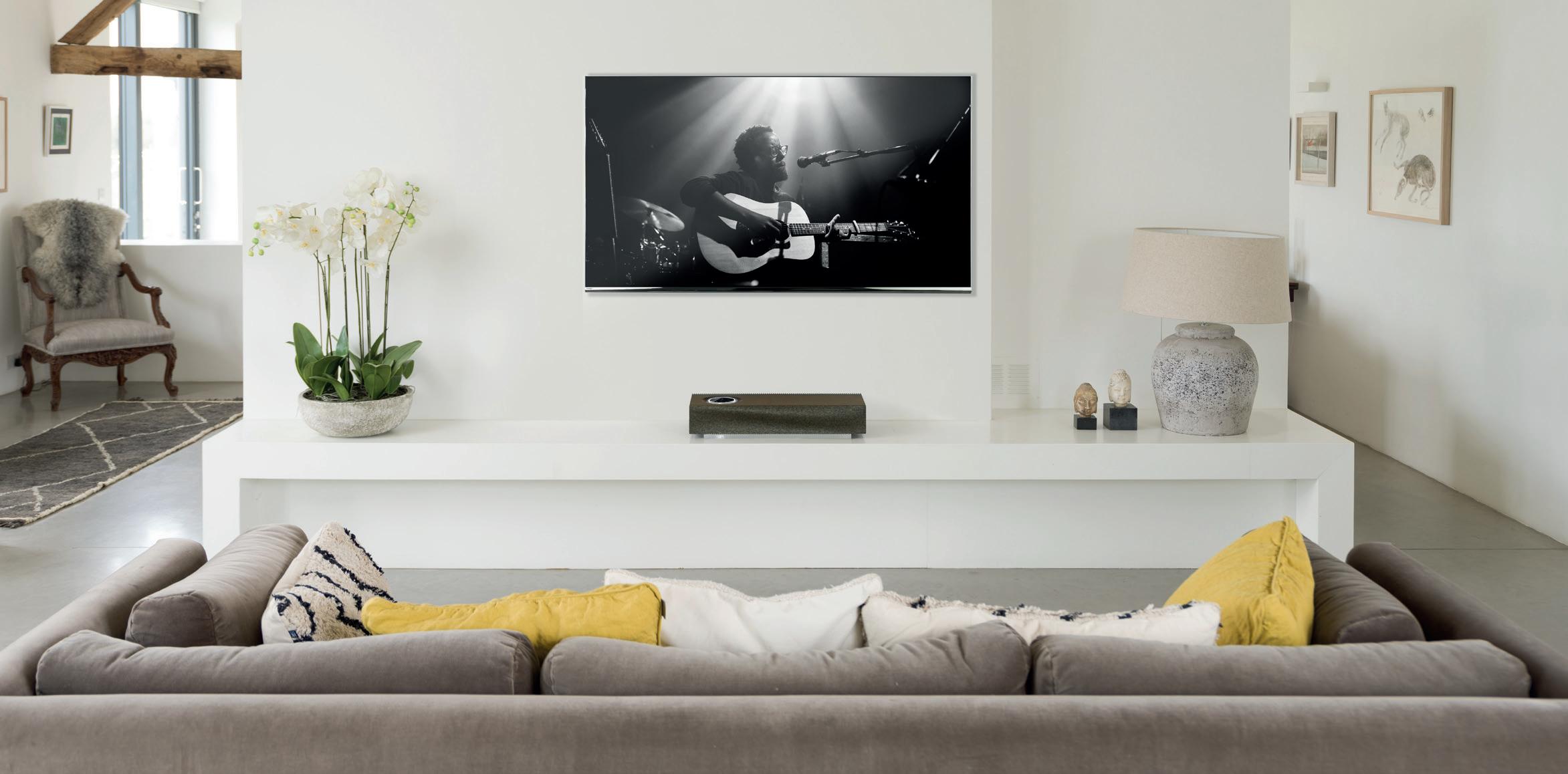
Naim make high end music players, like ND555, NDX 2 and NSC222. They also make a range of Uniti all in one systems that have everything bar the speakers. These almost all have HDMI Audio Return Channel, so can integrate seamlessly with most modern TV sets.
The Mu-so 2, pictured below, also has HDMI ARC and can be used as a sound bar to give a large, surprisingly full range sound without the need for an additional sub-woofer.

Both Mu-so 2 and the Cube-like QB2 play music unusually well but only Mu-so 2 has the HDMI Arc feature.
All these components can work completely independently or in party mode whereby all the zones are completely in sync, playing the same music, albeit at different listening levels. Fully Roon compatible too.
As standard, Mu-so 2 + Qb2 come with charcoal coloured grilles.
Mu-so QB 2 is pictured left.
Other grills can be purchased in olive, terracotta or peacock.
Signals St Cecilia’s House 188 High Road Trimley St Mary IP11 0SS 01394 672464 www.signalshifi.com
Olive is shown here.






































































